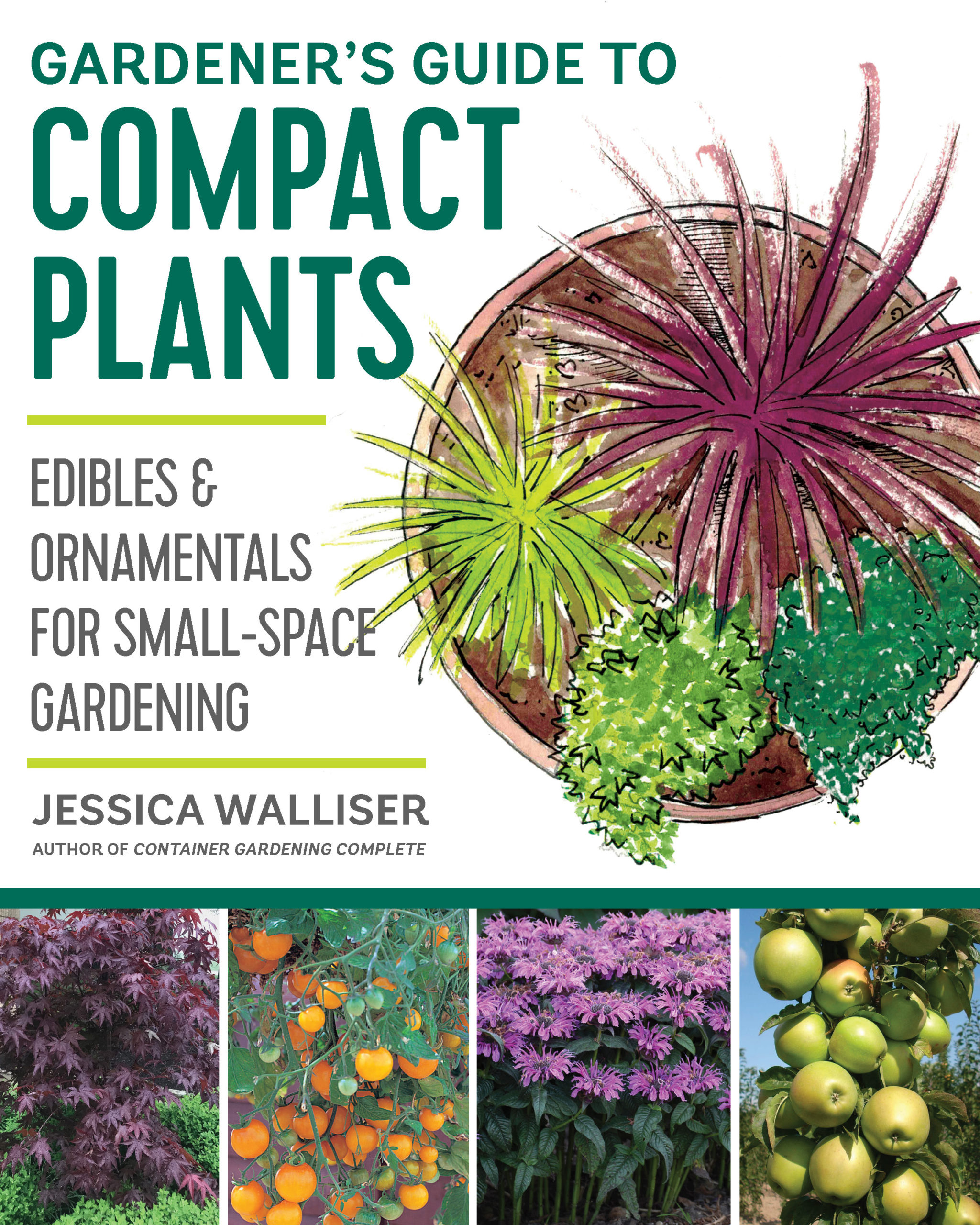By Jessica Walliser
Published by Cool Springs Press
Available in the US from:
The Quarto Group
100 Cummins Center,
Suite 265D
Beverly, MA 01915
7″ x 9″
296 pages
Hardcover
Price: $24.99
Jessica Walliser’s guide shows you how to view the big picture, choose a style based on several factors (like location and theme) and then list compact plants tidy enough to fit between the track and a building. Plants need to grow slowly during the season for less maintenance and Walliser gives you growing tips and techniques. Pick from 40 ornamental plants profiled for attributes or 50 edible plants – all with great photos.
Possibly because of years of gardening, the author does not oversimplify the needs of compact plants or the needs of the gardener in choosing them. So too, new railroad gardeners (having just installed the track and buildings) must understand the long-term growth patterns of their plants or face hours, even weeks, constantly trimming or digging out straggly bushes to find the depot.
Walliser defines the “compact” nature of true dwarf and miniature plants and helps you see the difference in order to choose plants wisely. For example, on page 23, she warns about plant growth regulators (PGRs) used by some nurseries who spray plants with hormone inhibitors to create tidy-looking plants, but the look is temporary as the PGRs wear off.
Not to despair, readers soon learn about the insurgence of new nurseries specializing in small plants and their plight competing with big-box stores selling cheaper versions. A “Source List” in the appendices points to appropriate growers and sellers of seeds and dwarf plants all across America and the Internet.
In the section, “Design for Comfort, Mystery, and Visual Expansion,” 10 different designers from across North America each design a garden for a purpose, whether it’s for a Tex-Mex courtyard, a shady nook, or a backyard cocktail garden. Readers can use a pro’s planting ideas as inspiration to design a similar garden railroad landscape using their plant lists.
But, you say, your garden site has challenges. The section, “Compact Plants with a Purpose” offers plants to fix eight challenges. Not only will readers see plant photos that fix “Challenge #1: A Boring Winter Landscape,” but also eight plants to fix “Challenge #5: Too Much Shade.” What might be missing in our garden is “Challenge #6: Minimal Texture in the Landscape” – how about trying dwarf Chinese astilbe?
Except for the annual vegetable and herb plants, all plant profiles in this guide include the USDA Hardiness Zone. Why not be an informed shopper of compact plants?














